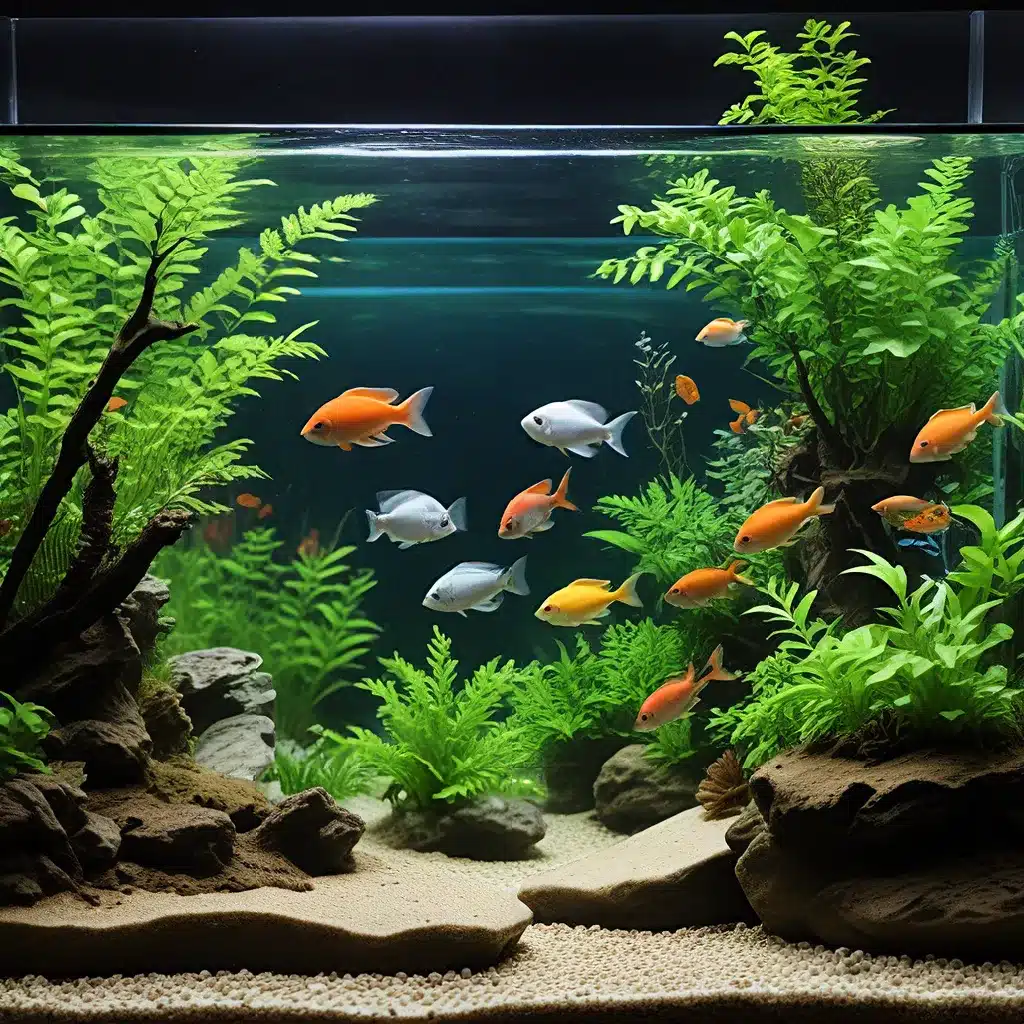
In the captivating world of aquariums, the pursuit of vibrant, thriving underwater ecosystems often comes with an environmental cost. However, as conscientious aquarists, we have the power to minimize our aquatic footprint and cultivate sustainable practices that benefit both our beloved fish and the planet. Join us as we explore the transformative world of eco-friendly aquarium management, where cutting-edge techniques and thoughtful stewardship converge to create a harmonious aquatic oasis.
Mastering the Art of Eco-Friendly Aquascaping
Aquascaping, the intricate design and layout of aquarium environments, is a crucial aspect of sustainable aquarium practices. By carefully selecting aquatic plants, hardscapes, and decorative elements, aquarists can create visually stunning setups that also promote the well-being of their inhabitants. One eco-friendly approach to aquascaping is the use of natural, locally sourced materials, such as driftwood, rocks, and aquatic plants native to the region. These elements not only enhance the aesthetic appeal of the aquarium but also contribute to the overall health and balance of the ecosystem.
In a recent aquarium update, we learned about the introduction of Otocinclus catfish, a species renowned for its algae-consuming capabilities. By incorporating these algae-eating fish, aquarists can significantly reduce the need for manual algae removal, promoting a more self-sustaining aquatic environment. Additionally, the strategic placement of these fish can help maintain the delicate balance of nutrients and light within the aquarium, further enhancing the overall sustainability of the system.
Careful plant selection is another key component of eco-friendly aquascaping. Choosing hardy, low-maintenance aquatic plants that thrive in the specific water conditions of the aquarium can minimize the need for frequent pruning, water changes, and chemical interventions. As observed in the weekly aquarium update, the introduction of plants can also help combat algae blooms, a common challenge in newly established tanks. By leveraging the natural processes of plant growth and nutrient uptake, aquarists can create a self-regulating aquatic ecosystem, reducing their overall environmental impact.
Optimizing Water Management for Sustainable Aquarium Keeping
Water management is a critical component of sustainable aquarium practices, as it directly impacts the health and well-being of the aquatic inhabitants. One eco-friendly approach to water management is the implementation of efficient filtration systems. By investing in high-quality filters that effectively remove waste, dissolved organics, and excess nutrients, aquarists can minimize the frequency of water changes, conserving both water and energy resources.
As discussed in the source information, the initial algae bloom experienced in a new aquarium is a normal and expected occurrence during the cycling process. However, by maintaining a balanced ecosystem through proper filtration and water quality management, aquarists can minimize the duration and severity of these algae blooms, reducing the need for manual intervention and chemical treatments.
Another sustainable water management strategy is the incorporation of water-saving technologies, such as reverse osmosis (RO) or deionization (DI) systems. These advanced filtration methods not only improve the overall water quality but also reduce the amount of water consumed during regular maintenance. By implementing these eco-friendly water management techniques, aquarists can significantly reduce their aquatic footprint while ensuring the long-term health and vitality of their aquatic ecosystems.
Developing a Holistic Approach to Sustainable Aquarium Keeping
Sustainable aquarium practices extend beyond just aquascaping and water management; they encompass a holistic approach to the entire aquarium ecosystem. This includes responsible fish stocking, appropriate feeding regimes, and thoughtful waste management strategies.
When it comes to fish stocking, the principle of “less is more” often applies. By carefully selecting a smaller number of compatible species and avoiding overstocking, aquarists can reduce the overall bioload on the system, minimizing the strain on the filtration and water quality. Additionally, choosing species that are well-suited to the specific aquarium conditions and habitat can further enhance the sustainability of the setup, as these fish will thrive without requiring extensive interventions or supplementation.
Feeding regimes also play a crucial role in sustainable aquarium keeping. Providing the appropriate amount and type of food for the fish, and minimizing waste, can help prevent excess nutrient buildup and reduce the need for frequent water changes. Exploring high-quality, nutrient-dense fish foods and implementing portion control can contribute to a more efficient and eco-friendly aquarium ecosystem.
Finally, responsible waste management is essential for sustainable aquarium practices. Proper disposal of aquarium waste, such as uneaten food, plant trimmings, and filter media, can help prevent the introduction of harmful substances into the environment. Aquarists can explore alternative disposal methods, such as composting or proper recycling, to minimize their aquatic footprint and promote a healthier planet.
By adopting a holistic approach to sustainable aquarium keeping, aquarists can create vibrant, thriving underwater environments that not only captivate the senses but also contribute to the greater good of our shared ecosystem. Remember, every small step towards eco-friendly aquarium practices can have a significant impact, and together, we can redefine the future of aquarium keeping.
Explore the world of sustainable aquarium practices and discover how you can reduce your aquatic footprint while cultivating a harmonious aquatic oasis. Join us on this rewarding journey towards a more eco-conscious aquarium hobby.

